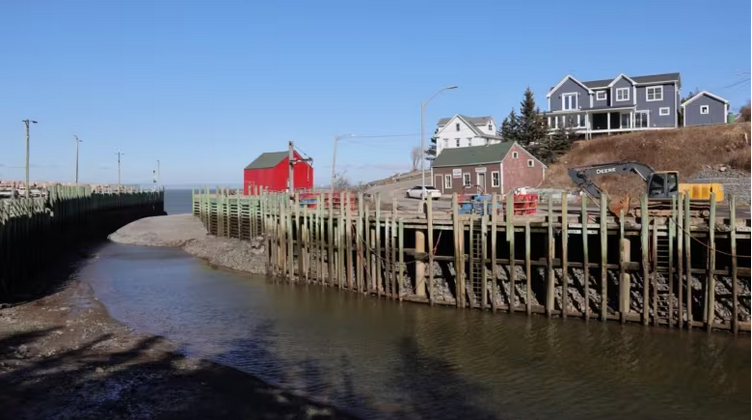Flooded streets, destroyed basements and a GO Train stuck in so much water that passengers had to be ferried to dry ground in inflatable boats — 10 years after Toronto was pounded by a record-breaking storm, many can still remember where they were when it happened. The storm on July 8, 2013 saw at least 300,000 Toronto residents hit with power outages and about 1,400 passengers stranded for hours on a train filled with water. It also highlighted the need for more investment to help prevent flooding.
Hamilton aims to double its tree canopy amid wildfire smoke, extreme heat and climate change
Trees filter air to reduce smog and pollution, capture and absorb water to prevent flooding, block the sun's rays to reduce heat islands and provide wildlife habitat to support biodiversity, says the city's urban forest strategy. Last month, council approved the city's plan to increase its urban canopy to 40 per cent by 2050, with a focus on planting more trees in areas that are lacking, like downtown, and keeping existing trees healthy.
Ontario Making Historic Investments in Wetlands Restoration
The Ontario government is investing up to $6.9 million in approximately 100 local conservation projects to restore and enhance wetlands across the province. This funding will help 14 conservation partners restore more than 2,400 acres of wetlands in Ontario, which combined is larger than Presqu’ile Provincial Park, near Brighton. The projects will improve water quality, help prevent flooding and build climate change resiliency.
N.S. oceanside hamlet bands together to protect itself from climate change
Hope Shanks has seen more than her fair share of the effects of climate change. At least once a year, the bookkeeper for the restaurant and shop in Halls Harbour, N.S., has to help clean up after water from the Bay of Fundy breaches the seawall, sweeps across the parking lot and floods the restaurant. Most recently, on Christmas Eve, the Halls Harbour Lobster Pound was inundated with more than a metre of water.
Canada invests to help reduce flood risks and protect critical infrastructure in Selkirk
Today, Terry Duguid, Parliamentary Secretary to the Minister of Environment and Climate Change and Member of Parliament for Winnipeg South, and His Worship Larry Johannson, Mayor of the City of Selkirk, announced a federal investment of $5,920,000 to build infrastructure that will help prevent flooding in Selkirk. The new Storm Water Management Capacity Building Program consists of three projects that will protect homes, businesses, roads, and essential infrastructure in Selkirk. The construction of a west end storm retention pond in the new development planned west of Annie Street and south of Manitoba Avenue will serve to capture storm water to reduce the risk of overland flooding during heavy rainstorms and snowmelt runoff each spring.
Coordinated action critical to preventing flooding in Portland, Vancouver
Without careful coordination for flood risk management throughout the water year, the Columbia River would have hit a stage of 25 feet at Vancouver in June, a height not seen in the river in springtime since 1956. That level would be considered ‘major flood stage’, as determined by the National Weather Service. Evidence of the same storm’s power was seen further south in the damaging flooding along the Yellowstone River in northern Wyoming.
Yukon Energy gets OK to drop water levels at Marsh Lake another 10 cm
In an effort to help prevent flooding in the Southern Lakes area, Yukon Energy was given the green light to lower the level of Marsh Lake by an additional 10 centimetres. The Yukon Water Board granted the utility permission to lower the levels last week. Marsh Lake, a 30-kilometre long glacier-fed lake, is the northernmost of several lakes that make up the Southern Lakes district.
Soaking up ideas: How ‘sponge cities’ can absorb water, prevent flooding
Toronto launches $3B project to improve water quality in Lake Ontario and city's waterways
City officials have launched Toronto's largest and most significant storm water management program — the Don River and Central Waterfront and Connected Project — which will halt the flow of sewage into Lake Ontario and clean up waterways. The first phase of the five-phase project — the Coxwell Bypass Tunnel — will see a 10.5 kilometre long and 6.3 metre wide tunnel built at a cost of $400 million. The overall project is expected to cost $3 billion.










